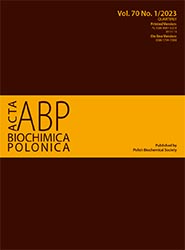Co-existence of Extended Spectrum β-Lactamase and carbapenemase-producing genes from Diarrheagenic Enteric pathogens isolated in a tertiary care hospital
Abstract
Multiple drug resistance (MDR) among bacterial pathogens is a growing concern that clinicians are facing worldwide. Diarrhea among infants is frequent and is caused by various bacterial and viral infectious agents. Two hundred and twelve stool specimens were collected from pediatric patients from a rural quaternary hospital in Barshi, Sholapur, India, between March and December 2017. Total 180 specimens were positive for various bacterial pathogens, while the remaining 32 diarrhea cases may have been caused by a viral or uncultured bacterial pathogen. Identification of the bacterium and its antibiotic susceptibility were primarily carried out with VITEK-2. Distribution of diarrhea-causing bacteria among the 180 samples was as follows: 61.11% (110) Escherichia coli, 30.55% (55) Klebsiella pneumoniae, 4.44% (8) Proteus mirabilis, 2.22% (4) Shigella spp. 1.11% (2) Morganella morganii and 0.55% (1) each for Enterobacter cloacae and Citrobacter koseri. There was a co-existence of multiple genetic traits conferring extreme drug resistance (XDR) status to 19 isolates, 17 of which were determined to be E. coli and one each of E. cloacae and C. koseri. Antibiotype determination using VITEK-2 and polymerase chain reaction (PCR) amplification of the genetic traits indicated the co-existence of blaTEM and blaCTX-M15 isolates in all 19 isolates, with the exception of E. cloacae. Results showed that 10 out of 19 strains expressed the AmpC cephalosporinase blaCMY-2 gene, whereas metallo-carbapenemase was expressed in four isolates. Distribution of blaNDM-11 and acquired penicillinase blaSHV-1 resistance among 180 clinical isolates is discussed in the light of ESBL traits. This is the first report from the rural part of Maharashtra India showing that as many as 10.55% of the pathogenic strains were XDR, a step ahead of MDR.
Acta Biochimica Polonica is an OpenAccess quarterly and publishes four issues a year. All contents are distributed under the Creative Commons Attribution-ShareAlike 4.0 International (CC BY 4.0) license. Everybody may use the content following terms: Attribution — You must give appropriate credit, provide a link to the license, and indicate if changes were made. You may do so in any reasonable manner, but not in any way that suggests the licensor endorses you or your use.
Copyright for all published papers © stays with the authors.
Copyright for the journal: © Polish Biochemical Society.


